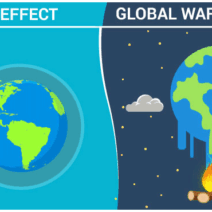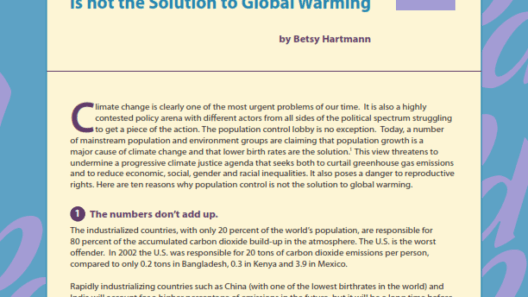The proliferation of cell phones and electronic devices has dramatically altered the landscape of communication and interaction. However, this technological marvel comes with an intricate and often overlooked environmental footprint. Analyzing the impacts of these devices reveals a significant correlation between electronics production and global warming, exacerbating climate change.
To comprehend the extent of this connection, it is crucial to explore several dimensions: the manufacturing process of electronics, their energy consumption during use, the disposal and recycling challenges they pose, and the cascading effects on global warming milestones.
Manufacturing Processes and Material Extraction
The manufacturing of cell phones and electronics is a resource-intensive operation. It necessitates the extraction of raw materials, which includes the mining of metals such as gold, cobalt, and tantalum. The extraction processes typically involve significant greenhouse gas emissions due to the extensive energy required in mining operations, often reliant on fossil fuels. Furthermore, these processes can lead to ecological degradation, as forests are cleared, and natural habitats are destroyed to make way for mines.
Take, for example, lithium extraction for rechargeable batteries. The demand for lithium has surged, particularly with the rise of electric vehicles and smartphones. Lithium mining is associated with high water usage in arid regions, leading to water scarcity and affecting local ecosystems. The carbon footprint of acquiring these materials can rival that of traditional fossil fuel industries, marking the initial stages of an electronic device’s lifecycle as detrimental to the environment.
Energy Consumption During Use
Once in the hands of consumers, cell phones and electronics represent a substantial ongoing energy demand. The energy consumption of electronic devices contributes significantly to electricity generation, primarily sourced from fossil fuels. Although individual devices may seem innocuous, the collective energy consumption of billions of electronics amplifies their environmental impact.
Smartphones, for instance, are generally charged daily. The continuous demand for electricity not only drives up consumption but also effects changes in the energy grid, which is often not equipped to deal with such rapid increases in demand. This spike can lead to greater reliance on less sustainable energy sources, further exacerbating carbon emissions. Research indicates that the energy consumed by mobile networks and data centers supporting these devices adds an alarming 1-2% to global greenhouse gas emissions. This looming hidden footprint of electronics demands attention as lifestyles evolve and technology continues to proliferate.
Disposal and Recycling Challenges
The issue of electronic waste, also known as e-waste, is a critical yet frequently neglected aspect of the conversation surrounding electronics and climate change. Cell phones and gadgets have relatively short lifespans in the consumer market due to rapid technological advances and marketing pressures. Consequently, millions of devices are discarded annually, contributing to a burgeoning e-waste crisis.
Improper disposal of e-waste can lead to hazardous environmental contamination. Many electronics contain toxic materials like lead, mercury, and cadmium, which can leach into soil and waterways, posing substantial risks to both human health and wildlife. The recycling of these materials is challenging and often inadequate. Though some facilities recycle components, a significant portion of e-waste is shipped overseas to developing countries, where proper handling processes are rarely followed. This often results in dire environmental and health repercussions for communities involved in informal recycling operations.
Cascading Effects on Global Warming
The repercussions of cell phone and electronics use extend beyond direct emissions. The cumulative effect of large-scale production, consumption, and disposal practices creates a cascade of environmental impacts that are intricately linked to global warming. As technology continues to advance and the world remains entrenched in a cycle of consumption, the carbon footprint grows correspondingly.
The environmental cost of electronic devices often goes unnoticed against the backdrop of immediate conveniences provided by these innovations. Yet each device contributes to the broader challenges of climate change by necessitating raw materials, consuming vast energy resources, and generating waste. Transitioning to renewable energy sources for manufacturing and improving recycling technology are essential steps to mitigate these impacts.
The Path Forward
To address the hidden footprint of electronics, stakeholders must evaluate strategies that promote sustainability in technology. Manufacturers need to focus on reducing emissions associated with the sourcing of materials and the lifecycle of their products. Embracing concepts such as circular economy models can minimize waste and encourage the recycling of precious materials, effectively lowering net emissions.
Simultaneously, consumers are urged to make informed choices. Reducing consumption, utilizing devices for longer durations, and recycling responsibly can considerably diminish environmental impacts. Additionally, supporting legislation that holds manufacturers accountable for e-waste and promotes sustainable practices is vital.
In conclusion, while cell phones and electronics have revolutionized communication, their impact on global warming cannot be overlooked. Through the manufacturing processes, their energy consumption during usage, and the e-waste crisis, these devices contribute significantly to greenhouse gas emissions. Addressing the hidden footprint of electronics requires a collaborative approach from manufacturers, consumers, and policymakers alike, ensuring a sustainable future in which technology serves society without jeopardizing the health of our planet.








